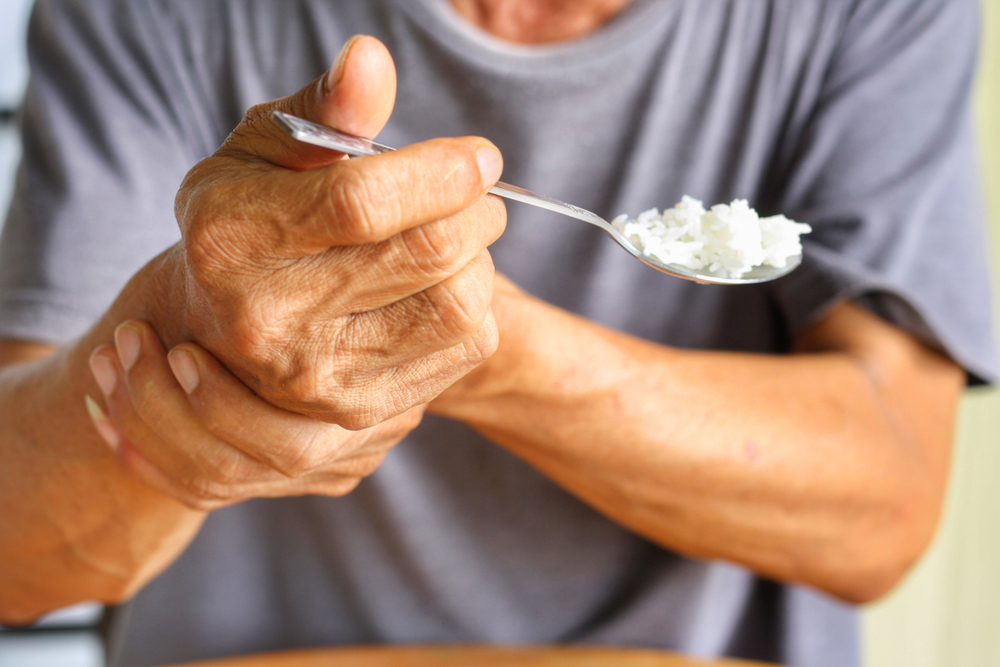12 Signs of Low Blood Sugar

Low blood sugar, also known as hypoglycemia, can affect anyone, though it’s more common in people with diabetes. It occurs when the level of glucose in your blood falls too low, depriving your cells of the energy they need to function properly. Recognizing the signs of low blood sugar is crucial for taking timely action and preventing more serious complications. Here are twelve common indicators to watch out for:
1. Sweating and Clamminess:

Have you ever broken out in a sweat for no apparent reason, feeling clammy even though it’s not hot? This could be a sign of low blood sugar. As the University of Michigan Health explains, hypoglycemia can trigger sweating, often more pronounced in individuals with diabetes. This happens because your body releases adrenaline in response to falling glucose levels. This “fight-or-flight” response can cause sweating even when you’re not physically exerting yourself. This can also manifest as night sweats, particularly in those with diabetes.
2. Irritability (“Hangry”):

We’ve all experienced that “hangry” feeling – the growing frustration and impatience that comes with hunger. There’s a scientific reason behind this. When your blood sugar dips, your body releases stress hormones like cortisol and adrenaline. These hormones can contribute to feelings of irritability and anxiety. It’s important to note, however, that while hunger can be a sign of low blood sugar, you can also feel irritable even with stable glucose levels. So, while it’s a potential indicator, it’s not always definitive.
3. Intense Hunger:

Your brain relies heavily on glucose for energy. When blood sugar levels drop, your cells, especially brain cells, don’t receive the fuel they need. This triggers a feeling of hunger, signaling your body’s need for more glucose. While it’s tempting to reach for sugary snacks or drinks, it’s better to choose foods that provide sustained energy. Medical News Today advises focusing on non-starchy vegetables, whole grains, and healthy fats. These foods help stabilize blood sugar levels, unlike the quick but fleeting boost from sugary options, which can actually lead to a subsequent crash.
4. Nightmares:

Hypoglycemia can disrupt sleep in several ways, including night sweats, restless sleep, and even nightmares. People with diabetes sometimes report vivid and disturbing nightmares that wake them up. These nocturnal issues are often overlooked or misdiagnosed. If you experience frequent nightmares, especially if you have diabetes, it’s worth discussing with your doctor. They may want to review your pre-bedtime routine, including exercise and diet, to identify potential contributing factors.
5. Difficulty Focusing:

Feeling foggy and unable to concentrate? Low blood sugar can impair your cognitive function. When your brain doesn’t get enough glucose, its ability to focus and process information is compromised. This can be especially noticeable when trying to perform tasks that require concentration. This isn’t just an adult issue. Children who skip meals can also experience significant drops in concentration, affecting their learning and behavior in school.
6. Dizziness:

Feeling lightheaded or dizzy can be another sign of low blood sugar. When glucose levels fall, your body’s sympathetic nervous system kicks in, releasing hormones that can cause dizziness, weakness, and hunger. Dehydration can worsen these symptoms, so staying well-hydrated is important. However, dizziness can have various causes, including inner ear problems. If eating doesn’t alleviate the dizziness, it’s crucial to consult a doctor to rule out other potential causes.
7. Shakiness:

Feeling shaky or jittery is a common symptom of hypoglycemia. This happens because your body releases adrenaline when blood sugar levels drop, prompting you to seek food. However, feeling shaky after eating could indicate a different condition called idiopathic postprandial syndrome (IPS). IPS can mimic low blood sugar symptoms like shakiness, headache, and dizziness. While IPS usually doesn’t require treatment, it’s important to differentiate it from true hypoglycemia.
8. Vision Changes:

Blurred vision, “black spots,” or even double vision can occur when blood sugar levels are low. Hypoglycemia, especially in people with diabetes, can affect eyesight. However, it’s important to remember that high blood sugar can also impact vision, causing lens swelling. Any persistent changes in vision should be promptly evaluated by a doctor to determine the underlying cause and rule out other potential eye problems.
9. Slurred Speech:

Slurred speech can be a surprising indicator of low blood sugar, often occurring when glucose levels fall significantly (below 40 mg/dL). This, along with difficulty finding words, signals the need for immediate action to raise blood sugar levels. Other moderate symptoms may include muscle twitching, unsteady gait, and mood swings. Recognizing the difference between mild and moderate symptoms is crucial for responding appropriately.
10. Sleep Disturbances:

Difficulty falling asleep or staying asleep can sometimes be linked to nocturnal hypoglycemia, or low blood sugar during the night. As mentioned earlier, night sweats, restless sleep, and waking up feeling unrefreshed or irritable can also be related to nighttime blood sugar dips. Maintaining a healthy sleep schedule is important for overall health and can also play a role in regulating blood sugar levels.
11. Seizures and Coma:

While most episodes of low blood sugar are manageable, severe drops can lead to serious complications like seizures, fainting, and even brain damage. In people with diabetes, extremely low blood sugar can lead to a diabetic coma, a life-threatening condition that can also be caused by very high blood sugar. It’s crucial to address low blood sugar promptly to prevent these severe outcomes. Early symptoms often precede a coma, so it’s essential to raise blood sugar gradually using glucose tablets or even regular soda.
12. Heart Palpitations:

A rapid heartbeat, fluttering sensation in the chest, or heart palpitations can also be a sign of low blood sugar. As Health Direct explains, the release of adrenaline in response to falling glucose levels triggers the “fight-or-flight” response, which can cause these cardiac symptoms. Hypoglycemia can also lead to irregular heart rhythms and reduced blood flow to the heart, potentially causing cardiac arrhythmias. While rare, this can sometimes contribute to serious cardiac events, particularly in individuals with type 1 diabetes.




